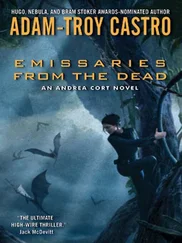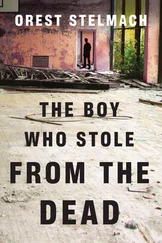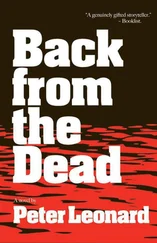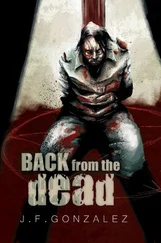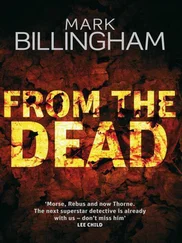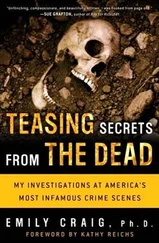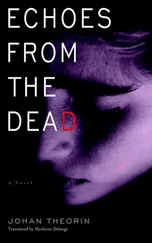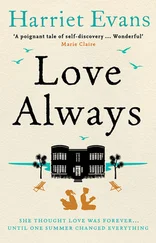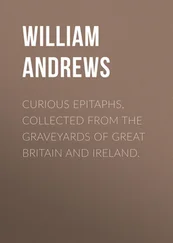When they arrested Ferguson, they told us, they'd insisted that he empty his pockets and spread the contents on his bed. There among his keys and loose change was a human kneecap. This patella appeared to have acquired a smooth polish, the kind it might have gotten from the skin oils and regular rubbing of a human hand. And indeed, Ferguson told the deputies, he'd been carrying the patella in his pocket for the past year. Then he told us even more-he'd thrown his wife, Shirley, into the cistern after beating her to death two years earlier. He'd made up a story about her running off with another man and, until now, everyone had believed him.
By now Ferguson was at the local jail and was no longer cooperating with the authorities. So Tom, Lee, and I gathered in the yard with Dr. Blake, the men from the Tennessee Bureau of Investigation (TBI), the sheriff's department, and the local rescue workers.
“We already searched the yard and outbuildings when we were looking for Richard,” one burly deputy explained. He added that he and his colleagues had found tiny bits of blood spattered on the kitchen walls and floor despite the obvious lengths to which someone had gone to clean up the crime scene. So, he went on, investigators had kept searching until they found the patella in Ferguson 's pocket. Now, despite his confession, they needed us to confirm that the object was indeed a human bone. Yes, Lee told him. It was. Clearly there were more skeletal remains to be found, so we formed teams to look for them-one for the house, a second for the yard and outbuildings, and a third to drain the cistern.
Cisterns are an integral part of homes throughout Appalachia. The rural areas don't always have sewers or water services, and it's usually too expensive to sink a well. If someone living in the country wants water, he or she pretty much has to collect rainwater or bring in a truckload of water to fill the cistern-a large, concrete-lined hole or a polyvinylchloride (PVC) drum buried in the ground, about three feet wide at the top, six to eight feet wide at the bottom, and up to twelve feet deep.
Detectives hadn't yet had to enter Ferguson 's concrete cistern-they'd used ropes and grappling hooks to retrieve Carpenter's body and then his head. But if there were more bones down there, a grappling hook wouldn't be enough. As we made our plans, Dr. Blake let us see the head, which he'd already photographed. There, in the victim's mouth, was the bloody stump of an amputated penis. As we stood staring at it, the rescue workers continued to drag the cistern with a net, retrieving a few plastic bags, a rotting shirt, and a single bone, which one of the firefighters held high over his head and waved in the air. All of us anthropologists could see right away that it was a radius-a bone from the human forearm.
“Okay,” I heard myself saying. “Now we know Ferguson was telling the truth. We'll have to drain the cistern.” Much to my surprise, the words came out with a tone of authority that sounded confident even to me. I expected the other investigators to cock their heads and smirk at the “uppity new kid,” but they only nodded in agreement and asked my advice on how to retrieve the rest of the bones without damaging any critical evidence.
Suddenly, everyone was looking at me. Lee was actually the most experienced member of the team, with Tom still a newcomer. But by age, I appeared to be the senior member of our team, so folks seemed to assume that I'd be the one to come up with something.
I knew that someday I'd be out of school, and then I really would be in charge of recovery efforts like this one. I felt so ill-equipped-and I knew that the investigative team in Ferguson 's yard had decades of training and experience. Surely the local firefighters knew more about cisterns than I did. And clearly the detectives had amassed years of experience searching for and documenting evidence.
So I came up with an approach that I still rely on today: I gathered the leaders of each team and drew on their strengths. “All right, gentlemen,” I said to the sheriff's chief deputy, the lead man from TBI, the volunteer fire chief, and Dr. Blake, the M.E. “Let's work together to set up a plan. We need to get all the water out of that cistern, but we can't disturb or lose any evidence. What do you think is the best way to get it done?”
To my delight, this method worked. The team members immediately began offering suggestions-for my approval. For the first time I could remember, my relatively advanced age was working for me-at the ripe old age of forty-five, I at least looked like someone who should be in charge. Some of the TBI detectives had worked with me before and they knew I was still a student. But they also knew that I'd been working with Dr. Bass for almost three years, serving as a key investigator in some of his recent major cases. They were clearly willing to trust my judgment, making me think that I should trust it, too.
I started with the team that was going to drain the cistern. The local fire department had figured out how to pump the water out, so I made only one small suggestion: Put a screen over the outflow pipe to catch any small particles or bones that might be sucked out with the water. They improvised, pulling a screen from an outbuilding's window and propping it up on concrete blocks. A few minutes later, we found our first prize: some small human hand bones.
Lee was now busy over at a dump site at the property's edge, where she'd found what looked like another piece of bone in a pile of ashes. She'd found a chunk of parietal bone from the side of a skull-and to everyone's bewilderment, there seemed to be a neat round hole right in the middle of it. Detailed analysis of that would have to wait, however, as Lee and I were suddenly being summoned to examine the contents of the wood-burning stove in the living room. Sure enough, there were bones inside the stove, which we'd now have to dismantle and search.
Not yet, however, because just then, another detective who had been searching the kitchen called out to me. He had found still more bones-in the kitchen cupboard, propped up on a plastic canister beside a glass that held a toothbrush and a tube of toothpaste. At first he'd thought the items were soup bones, or maybe bones set aside for some dog-but I saw at a glance that he'd found two human heel bones and a piece of a breastbone, or sternum. Like the bone in the trash pile, the sternum had a neat round hole right through the middle. What in the hell was going on here?
No sooner had I identified these bones as being human than another firefighter came rushing in from draining the cistern.
“The water is almost all out, and you won't believe what we've got down there, Doc,” he cried out. “It looks like almost a whole skeleton!”
The discovery didn't surprise me-but being called “Doc” did. I'm sure it happened just because the volunteer didn't know my name. But even though I didn't yet have a right to the title, I didn't correct him. After all, I didn't want to embarrass him, did I?
From that point on, things kept happening faster and faster. When I looked down into the cistern, I saw dozens of human bones, all jumbled up on the bottom. If they had seemed to mirror the victim's position at death-stretched out prone, huddled against a wall, or bound hand and foot-we would have had to document their position. Since they were so clearly in disarray, though, we decided simply to send someone down into the cistern to retrieve them. (Later I wondered what the murderer and his mother did about their drinking water. Maybe they thought the bones gave it an interesting flavor. At any rate, the decomposing body didn't seem to have affected their health-or not so they noticed.)
Of course, getting into the cistern was harder than it sounded. Whoever went down there would be working in a confined underground space where a body had been rotting, producing gases and other toxins. The fire chief insisted that anyone who entered the cistern had to wear a self-contained breathing apparatus (SCBA) tank and respirator, adding to the sense of danger. Finally, Tom agreed to take on the job.
Читать дальше

